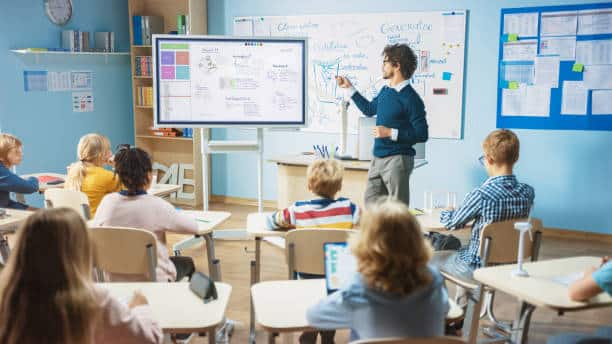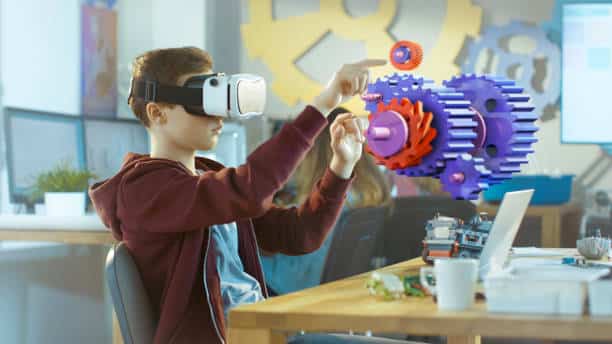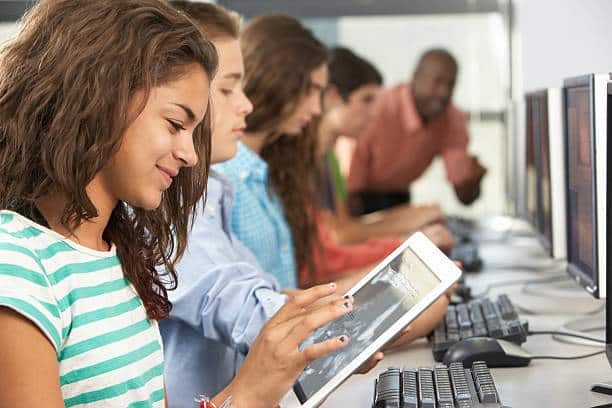Interactive training involves students being more engaged in the learning process. From kindergarten to college, instructors use different teaching techniques to incorporate this method into their classrooms. The instructors plan lessons and strategic plans that keep students’ attention. Teaching techniques like asking questions and using interactive learning tools help make the course material clear and support student success. Classroom settings benefit from these techniques, fitting different personalities and budgets. Grading and teaching are adjusted to make the most of the interactive approach. This strategy not only helps with understanding but also ensures every student can learn well. Interactive training is very helpful and has many benefits, which we will discuss in this blog.
What is Interactive Training?

Interactive training techniques can keep students engaged. They use technology to move away from passive traditional lecture styles. Although it can feel intimidating, remember that the goal is to support pedagogy, not replace it. Instructors must evaluate educational tools to enhance lessons. New possibilities open up, making the learning experience better.
Interactive learning helps students understand more deeply. Instructors use tools that let them ask questions and get feedback. This way, they can change lessons on the spot. Anything that doesn’t help should be left aside. This approach makes learning more active and keeps students focused.
Also Read: What is Vicarious Learning
Strategies for Interactive Learning

Now, we will share some of the best strategies for interactive learning.
Flipped Classroom
The flipped classroom model has students learn first-exposure material at home through recordings or readings. In class, they do interactive homework and hands-on exercises. This method makes in-class time more focused on higher-level cognitive activities.
Also Read: Bespoke eLearning
Team-Based Learning
Team-based learning uses a collaborative strategy with three-step cycles:
- Preparation
- Readiness assurance tests
- Application-focused exercises
Teams work on tasks in class, making this an effective way to build a strong learning environment. Technology helps facilitate tests and shows results quickly.
Enhanced Lecture
Enhanced lectures are a broad category that blends traditional methods with interactive tools. Instructors ask questions using response technology to poll classes and get feedback, which can lead to small group discussions that help students understand difficult concepts.
Peer Instruction
Peer instruction is about collaboration. The instructor lectures for a short time, and then the students discuss questions in small groups. This helps them better understand the subject matter. In-depth understanding comes from sharing choices and processes with peers.
Benefits Of Interactive Learning

Now, let’s discuss some of the benefits of interactive learning in detail.
Engagement
Interactive learning creates a positive effect on student engagement. This benefit helps students stay focused and sharpen their understanding. According to some research, if you implement response technology, 87 percent of students will find it engaging. This addition helps reduce daydreaming and keeps students involved.
Critical Thinking
Interactive learning boosts students’ skills and provides tools for better understanding. When students are engaged in class, they become more focused. They explore and use the subject while also building teamwork and social skills. This makes the learning process stronger and more effective.
Collaboration
In lecture-focused environments, a few students often dominate discussions. However, interactive techniques give every student a chance to engage. They can express opinions and see diverse points of view. This collaboration helps build social and problem-solving skills among students.
Final Thoughts
Interactive training helps students learn better by keeping them engaged. Instructors use different teaching techniques and technology to make lessons more interesting. This method works for everyone. By asking questions, getting feedback, and encouraging collaboration, students understand the material better. Interactive learning also improves critical thinking and problem-solving skills. Overall, it makes the learning experience more effective and enjoyable for everyone.
FAQ'S
Can you give an example of interactive learning?
Brainstorming: Use this method in groups or with the whole class to generate exciting ideas. Think, pair, share: Have students work in pairs to solve a problem, whether it’s a worksheet, activity, or discussion. Working together, they can find great solutions.
Why is interactive learning important?
When kids actively take part in learning, their skills improve greatly. Interactive learning makes education more collaborative and gives kids more opportunities to connect with each other meaningfully.
What is the role of students in interactive learning?
In a student-focused classroom with interactive learning, students take an active role. This helps them understand and remember the information better.






